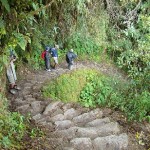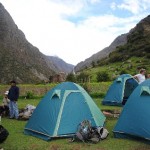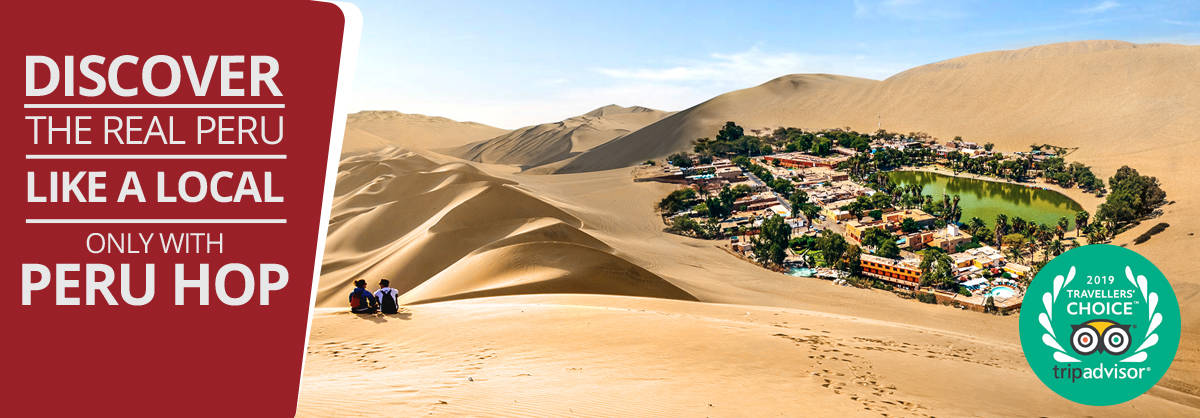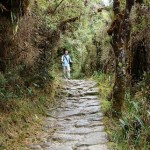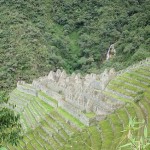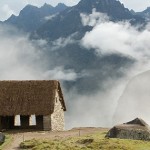Inca Trail to Machu Picchu, 10 Things to Help You Plan
May 3, 2012The Inca Trail has to be one the most popular adventure activities in South America, and every year draws literally thousands of hikers to the lofty heights of the Andes in the region of Cusco. Inca Trails were the vast network of paths that the Inca’s created to interlink major cities along the coastline and mountains of South America. The Inca’s built some 20,000 km’s of stone trails which stretched as far north as Quito (Ecuador) and south to Santiago (Chile). The famous Inca Trail hike starts about 2 hours from the Andean City of Cusco – at Kilometer 82, and winds through the mountain terrain, traversing several mountain passes, before finally arriving at Machu Picchu.
To help you prepare for the Inca Trail, we have compiled a list of 10 important things to know about the Inca Trail, to help you get the most out of your tour to Peru.
Permit System
Not all people are aware that the Inca Trail operates a permit system that limits the amount of hikers per day. The Direccion Regional de Cusco (DRC) is the governing body of the permit system and operate an online reservation system for permits. The maximum number of permits issued per day is 500, and must be purchased using the passport number of the person intending to hike. The Inca Trail hike is a top attraction in Peru, and to avoid disappointment we advise planning your trip 3-4 months (or more) in advance. For more information on available permits you can visit the DRC website www.machupicchu.gob.pe for more information (website in Spanish).
Tour Operators
Tour operators that wish to operate the Inca Trail must be fully approved by the DRC, before they are allowed to hike with tourists. Tour operators must meet strict guidelines about how they operate, the equipment they use and the medical equipment they carry. By Peruvian law, only Peruvian companies may operate the Inca Trail, so if you book with a tour operator that is based outside of Peru, you are sure to know that they are sub-contracting the services to a Peruvian company. Quality between tour operators vary, so take some time to do some research about the company you choose to trek with, before you hand over your money.
Acclimatization before you trek
It is important that you plan at least 2 days minimum of acclimatization time before you start any trek in the highlands of Peru. The high altitude affects tourists differently from a mild headache to more severe symptoms of vomiting and dizziness. Trekking at high altitude is strenuous on the body, and trekkers that have not taken the time to acclimatize could experience altitude sickness, which could prevent them from starting or completing the trek. The Inca Trail is in a remote location, and hikers that become ill usually return on foot to the trail head, where they can return by train to Cusco. Helicopters are available for airlifts, but cost on average about $4,000 per hour. Cusco is a wonderful city, and there are many attractions to visit in and around the city – therefore taking 2 – 3 days prior to the start of your trek can enhance your trip and keep you healthy. Take some time to review our Guide to Cusco for information on attractions, hotels, restaurants and general travel advice.
Camping Equipment
Camping equipment is an important part of the trek as you will be spending 3 nights under the stars en-route to Machu Picchu. The majority of the equipment that you will use will be provided by your chosen tour operator, but be sure to check what they include in the price and what they don’t. Tents, plastic floor sheets, are usually provided, whilst roll mats and sleeping bags are usually option extras that you will need to pay for. All other general camping equipment used for cooking and dinning will be provided.
ENTERTAINMENT TIP: If looking for fun at night, or to watch sports during the day, or even a taste of home, visit the Wild Rover Hostel Cusco for great food, sports and beer! Entrance to their bar is free even for non-guests
What will you eat?
Some of the food best you may eat whilst in Peru could be in the Inca Trail. Most good tour operators will have a specially trained chef that will cook for the group. Meals are usually high protein, high carb foods to help you with energy levels on the trek. Breakfast usually consist of breads / toast, fruit, pop-corn, juices and cereals. Lunches and dinners can include meat, pastas, chicken, potatoes, vegetables, pop-corn, hot drinks, salads etc. and are usually presented in the dinning tent on a long table, where you can enjoy the meal with your trekking group and guides. High energy snacks are also typically provided at the start of the day.
Extra Porters
Although it might seem brave or adventurous to carry your on back-pack, trekkers it is actually not much fun – even for the most seasoned trekkers. The high altitude, fairly strenuous climbs and descents on stone pathways can make it tough on your back, knees and ankles. Your Inca Trail tour operator will probably offer the services of extra porters to carry your equipment, charging between $30 – $40 for the trek. Porters are usually local farmers from the many mountain communities close to the Inca Trail, and are well accustomed to working at these altitudes.

Inca Trail Packing List
If you are carrying your own equipment, remember to pack light, only taking the minimum amount of things necessary to complete the hike. We recommend keeping your back-pack below 12 KG’s (25 lbs.).
- 1 pair or more of good quality hiking socks per day
- Light weight hiking shoes to sports shoes (mainly stone paths, comfort is most important)
- Water proof clothing for the rainy season (Sept – April)
- Warm clothing for the evenings, hat gloves, scarf, thick socks
- 1 pair of flip flops for walking around the camp site
- 2 spring loaded walking sticks – good for up and down hill
- Flash light
- 1 roll of toilet paper
- Wet wipes / 1 hotel sized bar of soap
- Small bottle of alcoholic gel
- 1 small towel
- Plenty of t-shirts
- Pack several small bottle of water, which are easier to carry and offer better weight distribution in your backpack
- Sun hat / Sun Screen
- 40-50% Deet based insect repellent
- Camera + spare batteries
- Passport – for entrance to trail
- Small amount of cash ($15 – 20 for porter / guide tips plus a little more for other purchases in Machu Picchu and Aguas Calientes).
When is the best time to hike the Inca Trail?
There are two seasons in Peru which affect the climate on the Inca Trail. May – September is the dry season, and the weather on the Inca Trail is sunny and dry with average temperatures of 17 – 20 Deg C (65 – 70 Deg F). Night time during this period is very cold and although the temperature usually doesn’t fall to freezing point is can get very close. During the rest of the year October – April, it is considered the wet season. This time of the year is okay to hike, but be prepared with waterproof clothing and coverings for your backpack. The Inca Trail is closed for maintenance during the month of February, which also happens to be the month of heaviest rainfall.
Footwear for the Inca Trail.
The Inca Trail is largely made up of ancient stone pathways built by the Incas, and therefore for most of the trek you won’t be wading through muddy tracks and soft ground. Be warned that the stones can often be slippery and uneven, so appropriate footwear is important. Full hiking boots are probably not essential, and certainly during the dry season a pair of comfortable training shoes (sneakers) would be sufficient. It is probably not recommended to hike in sandals (even special hiking sandals) as the Inca Trail has small biting sand flies which are happy to munch on passing tourists. If you are hiking during the wet season, be sure to use waterproof shoes.
Hike with 2 walking sticks
Although you might think it is not necessary, hiking with 2 walking sticks will really help. There is rarely a moment when you are hiking on the flat (perhaps for part of the first day), and for most part the trail is either rising of descending. Using 2 walking poles will help relieve pressure from your back and leg joints, whilst given you a little more stability as your maneuver along the uneven trail; this is especially useful if you are carrying a heavy backpack. Professional sprung loaded walking sticks are best, but a standard wooden pole (which you will find locals selling at the start of the trail) are also okay. Your Inca Trail operator will also have walking poles available for rent ($3 per day approx.).
The Inca Trail is simply one of the greatest treks in South America, and it is recommended to anyone who is up for the challenge! Now that you’ve started planning your Inca Trail trip, learn about the best way to travel from Lima to Cusco, the gateway to Machu Picchu.
YOU MAY LIKE

Lima to Machu Picchu – Agencies DON’T want you to read this!

#1 Rated Day Trips From Lima To Unforgettable Destinations
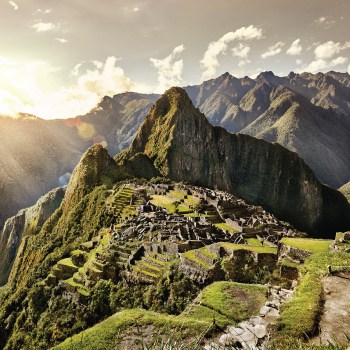
Everything You Need to Know to Avoid the Typical Tourist Mistakes At Machu Picchu

What NOT To Do When Visiting Rainbow Mountain
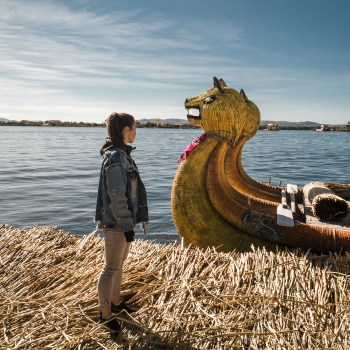
Spend 50% less and see 100% more in Peru
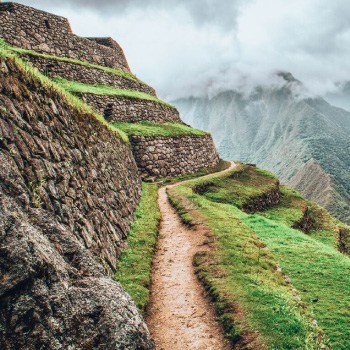
Machu Picchu Tickets – All You Need To Know!

These Hidden Destinations Just Outside Of Lima Will Blow Your Mind!

Peru – How to Avoid Being a Typical Tourist

OFFICIAL: This Company Was Voted The Best Way To Get Around Peru
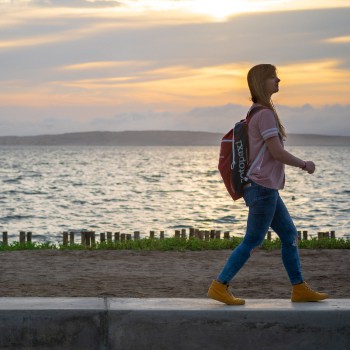
Peruvian Travel Secrets That Only The Locals Know
Leave A Reply
You must be logged in to post a comment.


